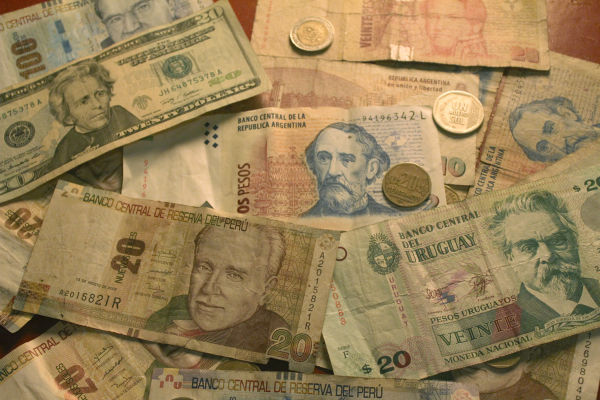In the world of international finance and foreign exchange markets, two terms that frequently surface are currency appreciation and currency depreciation.
These concepts are central to understanding how currency markets function, influencing everything from trade balances to inflation. While they may seem straightforward, the implications of currency movements can have complex effects on economies and trading decisions.
In this article, we'll break down what currency appreciation and depreciation mean, how they differ, and why understanding these concepts is crucial for investors and traders.
What Is Currency Appreciation?

Currency appreciation refers to an increase in the value of a currency relative to other currencies in the foreign exchange market. This means that one unit of a currency buys more of another currency than it did before. For example, if the British pound (GBP) appreciates against the US dollar (USD), it means that one pound can now buy more US dollars than it could previously.
Currency appreciation typically occurs due to an increase in demand for a particular currency. This can be caused by a variety of factors, including strong economic performance, higher interest rates, political stability, or higher demand for exports.
What Is Currency Depreciation?
In contrast, currency depreciation refers to a decrease in the value of a currency relative to others. When a currency depreciates, it means that one unit of that currency buys less of another currency. For instance, if the value of the Japanese yen (JPY) depreciates against the euro (EUR), it means that the yen now buys fewer euros than it did before.
Depreciation can be caused by factors such as lower interest rates, weak economic performance, political instability, or a trade deficithttps://www.ebc.com/forex/what-exactly-is-a-trade-deficit (when a country imports more than it exports). Depreciation can also result from central bank policies designed to weaken the currency.
Key Differences Between Currency Appreciation and Depreciation

The most obvious difference between currency appreciation and depreciation is their direction. Appreciation leads to a stronger currency, while depreciation results in a weaker one. However, there are other critical differences that affect their impact on the economy, trade, and investment.
1. Impact on Imports and Exports
Currency Appreciation:
When a currency appreciates, it makes imports cheaper for domestic consumers because they can buy more foreign goods for the same amount of domestic currency. For example, if the euro appreciates against the US dollar, Europeans can purchase more American goods for the same amount of euros. On the flip side, an appreciating currency can make exports more expensive for foreign buyers. If the UK pound appreciates against the US dollar, British products become more expensive for American consumers, potentially reducing demand for exports.
Currency Depreciation:
Conversely, currency depreciation makes imports more expensive because a unit of domestic currency buys fewer foreign goods. However, it makes exports cheaper for foreign buyers, potentially boosting demand for the country's goods. If the US dollar depreciates, American products become more affordable to international buyers, which can increase export sales and potentially reduce a trade deficit.
2. Inflationary Effects
Currency Appreciation:
When a currency appreciates, it tends to reduce inflationary pressures. As imports become cheaper, domestic prices for goods and services may decrease. This can be beneficial in controlling inflation, particularly in countries that rely heavily on imported goods, such as oil or raw materials. For example, if the US dollar appreciates against oil-producing currencies, the price of imported oil may decrease, leading to lower domestic fuel costs.
Currency Depreciation:
Depreciation typically leads to higher inflation. As the cost of imports rises, domestic prices may increase, driving inflation higher. In countries with significant imports, depreciation can exacerbate inflation and erode the purchasing power of consumers. For instance, if the Indian rupee depreciates, the cost of imported goods like electronics or fuel may rise, increasing inflationary pressures.
3. Investor and Capital Flows
Currency Appreciation:
A stronger currency can attract foreign investment, as it may signal a stable and growing economy. Investors are often drawn to countries with appreciating currencies because their investments in local assets (such as stocks, bonds, or real estate) may provide better returns when converted back to their home currency. Additionally, a stronger currency can indicate a higher level of economic confidence, which can further attract foreign capital.
Currency Depreciation:
A depreciating currency, on the other hand, may discourage foreign investment. If investors expect the currency to continue weakening, they may look elsewhere for better returns. However, for foreign investors who own assets in a country with a depreciating currency, there may be opportunities to buy assets at a discounted price, especially if they expect a reversal in the currency's value.
4. Effects on Government Debt
Currency Appreciation:
For governments with debt denominated in foreign currencies, a stronger domestic currency can reduce the burden of that debt. If the domestic currency appreciates, the amount of foreign debt in domestic terms decreases, making it easier for the government to repay its obligations.
Currency Depreciation:
A depreciating currency can have the opposite effect, increasing the cost of servicing foreign-denominated debt. As the domestic currency weakens, more of it is needed to repay debts held in foreign currencies. This can strain government finances and lead to fiscal challenges.
Why Understanding Currency Movements Is Important for Traders
For traders, understanding currency appreciation and depreciation is essential to anticipating market movements. The forex market is driven by currency pairs, and changes in the relative strength of currencies can impact the prices of commodities, stocks, and bonds.
Forex Trading: Traders can profit from currency movements by buying and selling currency pairs based on their expectations of appreciation or depreciation. For instance, if a trader expects the US dollar to appreciate against the Japanese yen, they might buy USD/JPY. Conversely, if they expect depreciation, they might sell the pair.
Commodity Trading: Currencies often have an inverse relationship with commodities. For example, a stronger US dollar typically leads to lower prices for commodities like gold and oil. Traders who understand currency dynamics can use this knowledge to predict commodity price movements.
Conclusion
Understanding the differences between currency appreciation and currency depreciation is crucial for anyone involved in international finance, trading, or investing. Both phenomena have significant implications for trade balances, inflation, and investment decisions.
While appreciation tends to make imports cheaper and control inflation, depreciation can stimulate exports and lead to higher inflation. For traders, recognising these currency movements is essential for making informed decisions and anticipating potential market shifts.
Disclaimer: This material is for general information purposes only and is not intended as (and should not be considered to be) financial, investment or other advice on which reliance should be placed. No opinion given in the material constitutes a recommendation by EBC or the author that any particular investment, security, transaction or investment strategy is suitable for any specific person.




























